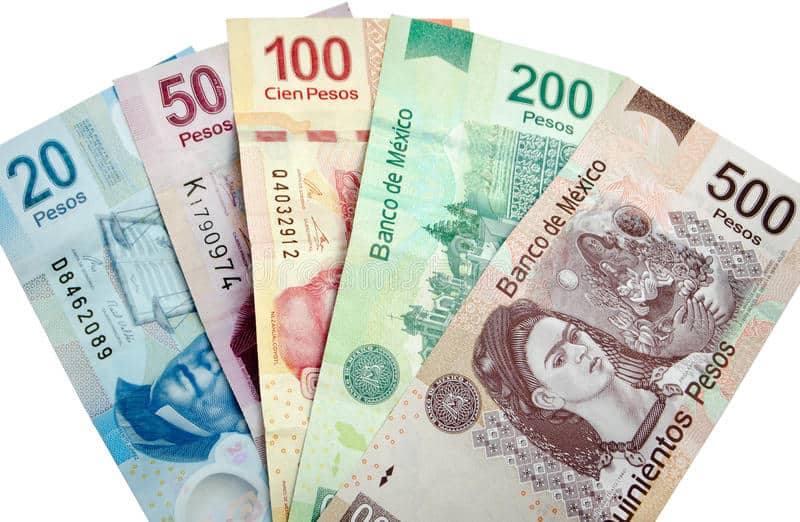In the global economy, exchange rates play a crucial role in determining the value of one currency in terms of another. For many individuals and businesses, keeping an eye on these rates is essential, especially when dealing with international transactions. In this article, we will delve into the dynamics of the exchange rate between the US Dollar (USD) and the Mexican Peso (MXN) to understand the factors influencing its fluctuations and how it impacts various stakeholders.
Historical Perspective:
To comprehend the present, it’s essential to glance back at the historical performance of the USD to MXN exchange rate. Over the years, this rate has witnessed significant variability due to economic, political, and global market conditions. Historical data reveals that the exchange rate has experienced both periods of stability and moments of intense volatility.
Factors Influencing Exchange Rates:
Several factors contribute to the fluctuations in exchange rates, affecting how much one currency is worth in another. Some of the key factors include:
- Interest Rates: Central banks play a pivotal role in setting interest rates. Higher interest rates in a country can attract foreign capital, strengthening its currency. Conversely, lower interest rates may lead to depreciation.
- Economic Indicators: Economic data such as GDP growth, employment rates, and manufacturing output can impact a currency’s value. Strong economic indicators often lead to a stronger currency.
- Political Stability: Political stability and a favorable investment climate are attractive to foreign investors. Countries with stable political environments typically have stronger currencies.
- Inflation Rates: Inflation erodes the purchasing power of a currency. Countries with lower inflation rates often experience appreciation in their currency value.
- Trade Balances: The balance of trade, representing the difference between exports and imports, can influence exchange rates. Countries with trade surpluses generally see appreciation in their currency.
- Market Speculation: The foreign exchange market is influenced by speculative activities. Traders and investors anticipate future movements in exchange rates, contributing to short-term fluctuations.
Current Exchange Rate Dynamics:
As of the latest available data, the exchange rate between the US Dollar and the Mexican Peso is subject to constant changes. At any given moment, individuals and businesses engaged in cross-border transactions must consider the prevailing rate to determine the equivalent value of their assets or liabilities.
At times, the exchange rate may favor those converting USD to MXN, providing a higher purchasing power in Mexico. Conversely, when the rate moves unfavorably, it can lead to increased costs for those dealing in US dollars.
Impact on Businesses:
Businesses operating on an international scale are particularly sensitive to exchange rate fluctuations. Importers and exporters must carefully assess the exchange rate to mitigate the risk of currency volatility. Sudden changes can affect the cost of goods, profit margins, and overall competitiveness in the global market.
For example, if a US-based exporter sells goods to Mexico and the USD strengthens against the MXN, the exporter may face challenges as their products become more expensive for Mexican buyers. On the flip side, a weaker USD may benefit exporters but pose challenges for businesses importing goods from Mexico.
Tourism and Travel:
Exchange rates also play a crucial role in the tourism industry. Travelers from the United States planning a trip to Mexico, or vice versa, need to consider the current exchange rate to estimate their travel expenses accurately. A stronger USD can make travel to Mexico more affordable for Americans, while a weaker USD may make it more expensive.
Investment Considerations:
Investors with assets in the United States or Mexico closely monitor exchange rates, as these rates influence the returns on their investments. A favorable exchange rate can enhance investment returns, while an unfavorable one may lead to lower returns when translated back into the investor’s home currency.
Government Interventions:
In some cases, governments may intervene in the foreign exchange market to stabilize their currency or address economic challenges. Central banks may buy or sell their own currency to influence its value. Such interventions can have a short-term impact on exchange rates.
Conclusion:
The value of a US Dollar in Mexican Pesos is subject to constant fluctuations influenced by a myriad of factors. Understanding these factors is crucial for individuals, businesses, and investors engaged in cross-border transactions. Keeping a close eye on economic indicators, political developments, and global market conditions is essential for making informed decisions in an ever-changing financial landscape. As we navigate the complexities of the global economy, the exchange rate between the USD and MXN will continue to play a central role in shaping international trade, investment, and economic relationships.

